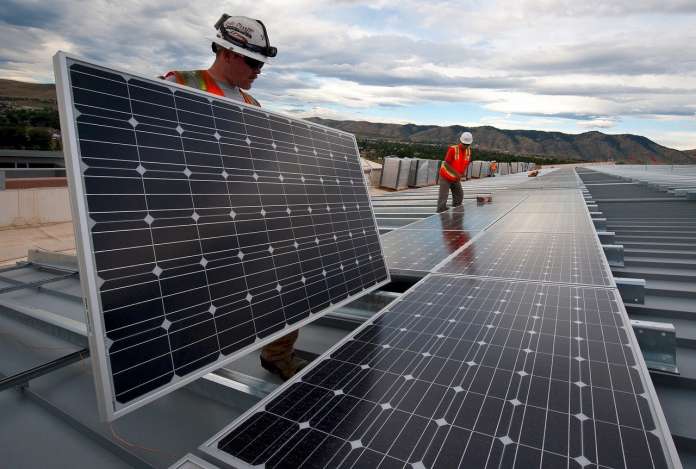There are still some discrepancies between the Hungarian renewable energy landscape and the national regulation, especially due to the wide unbalance between innovative technologies and the pace of the legislation, based on the data and statistics released by the Hungarian Transmission System Operator MAVIR and the Regulatory Authority MEKH.
“Right now, there are 4,000 megawatts (MW) of solar energy installed capacity (of which 3,000 MW are connected to the grid), to meet a growing demand that will reach 8,000 MW by 2030,” said Ádám Szolnoki, the CEO of the Hungarian Photovoltaic Industry Association (MANAP), speaking at a workshop organised by the Hungarian Regional Centre for Energy Policy Research (REKK).
By installing 4,000 additional MW of solar capacity, Hungary could reach its climate targets 5-6 years earlier than 2030.

According to him, the country needs more predictability and transparency in the process. Also, the continuous stalling in development is not sustainable for local Small and Medium Enterprises (SMEs), which could be the main players in scaling up the Hungarian solar power sector.
Indeed, the generation of renewable electricity is growing, as pointed out by Katalin Varga, Program Director at REKK.
“Support schemes for renewable energy are evolving, becoming more market-oriented than before while feed-in tariff (FiT) schemes are being replaced by premium schemes all around Europe,” she explained.
Not only small entities but also well-established energy groups like E.ON are working to boost Hungary’s renewables. Zsuzsa Nagy, Solutions Sales Expert at utility group E.ON mentioned the new company’s tool called Green Cloud, through which E.ON is providing companies with green energy in cooperation with local providers.
“E.ON is willing to contribute to a sustainable world and boost the renewable energy development and usage in Hungary,” she continued.
Overall, the development speed of renewable technology and industry is so fast that the official legislation cannot keep up with its pace. Thus, MANAP’s Mr Szolnoki is suggesting more ambitious PV targets and a system which is more transparent and based on consultation, greater openness and cooperation.





